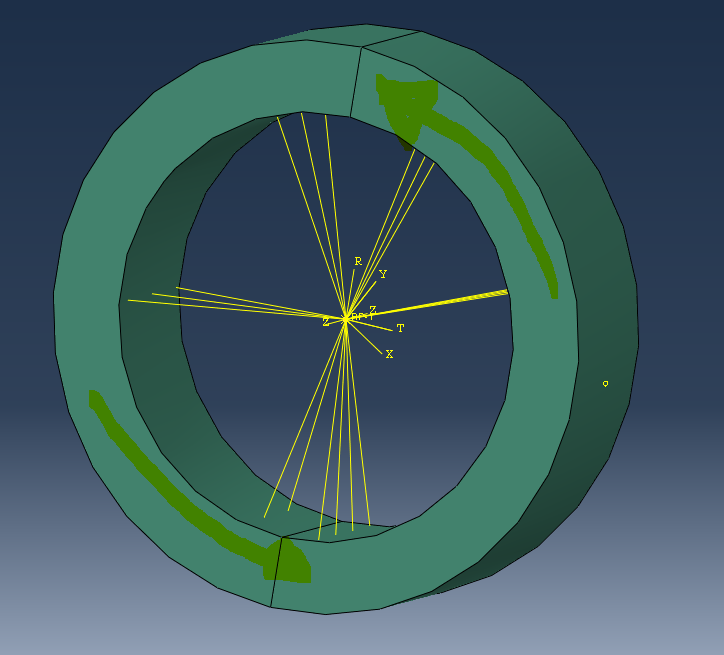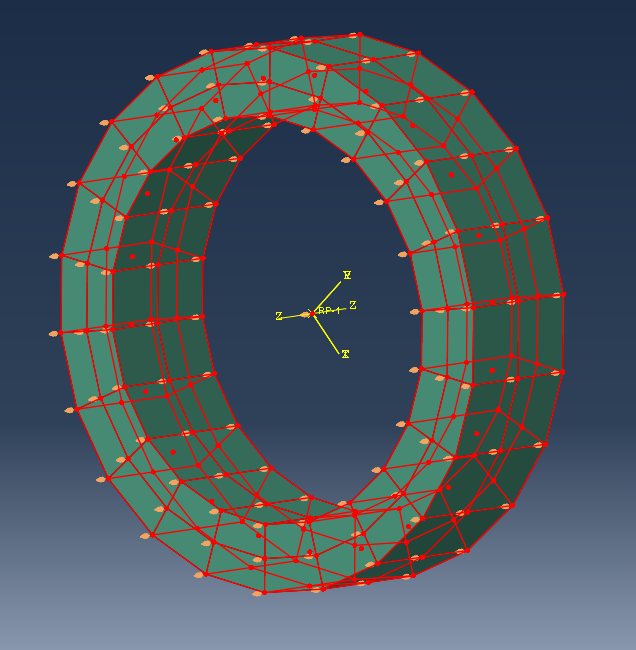bozosprzoj
Aerospace
- May 24, 2013
- 12
Dear all,
I have a very simple but at the same time a very frostrating problelm
I want to freely rotate the cilinder around its axis with an initial rotational velocity, while the inner surface is constrained to the reference point in the middle, as shown on the figure below. The simulation has to be done using Abaqus/explicit

I tried to simply use the coupling constraint to connect the inner surface with the reference point in the middle and prescribing the inital rotational velocity to the whole cylinder, but I get very strange results.
Since there is no boundary condition on load action on the cilinder, it sould freely rotate in space with its initial rotational velocity, but insted the results show very unstable results with high levels of stress, which doesnt make sence.
Does anyone know how this constrains should be modeled to get reasonable results?
I am also attaching the .inp of the problem.
Many thanks,
Uroš
I have a very simple but at the same time a very frostrating problelm
I want to freely rotate the cilinder around its axis with an initial rotational velocity, while the inner surface is constrained to the reference point in the middle, as shown on the figure below. The simulation has to be done using Abaqus/explicit

I tried to simply use the coupling constraint to connect the inner surface with the reference point in the middle and prescribing the inital rotational velocity to the whole cylinder, but I get very strange results.
Since there is no boundary condition on load action on the cilinder, it sould freely rotate in space with its initial rotational velocity, but insted the results show very unstable results with high levels of stress, which doesnt make sence.
Does anyone know how this constrains should be modeled to get reasonable results?
I am also attaching the .inp of the problem.
Many thanks,
Uroš

